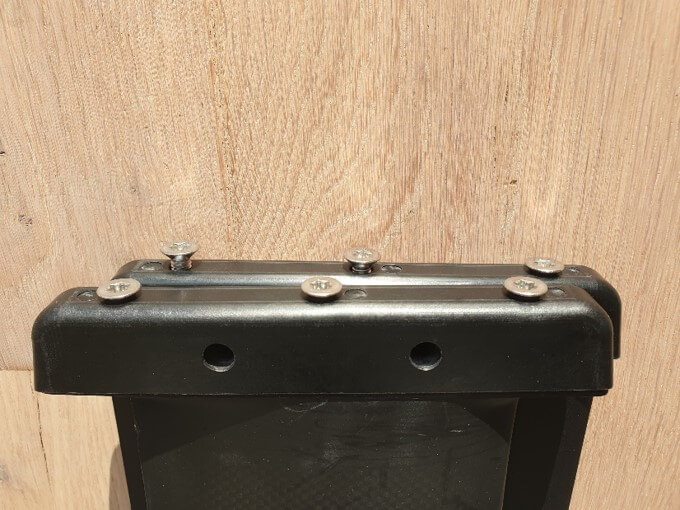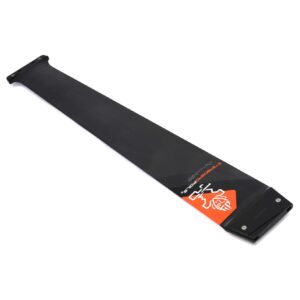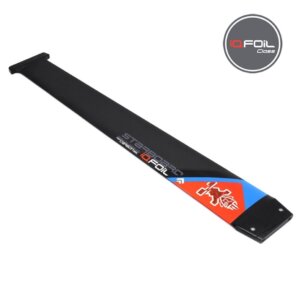Wind foils of course have a lot of strength to endure. Stiffness of the mast and fuselage is very important for both performance and stability. Roughly speaking, there are 2 materials used to make the mast, aluminum and carbon. Roughly speaking, all the foils in the price range to say €1,200 are always carried out with a mast of aluminium and the foils that are (still) more expensive often have a carbon mast. What are the differences? And is it really necessary to buy a carbon mast? Below you can read our advice.
Why is a stiff mast important?
There are 2 reasons why it is important to have a mast that is as stiff as possible. Because what happens under your board during wind foiling?
- The mast rotates (so rotates around its own length axis) due to the pressure that is applied to the wind foil, so that the fuselage no longer goes straight through the water. This then comes at the expense of the speed and affects the functioning of the profile of the wings (the flow angle of the water is also no longer at odds with the wings). It then feels a bit like a bit of turbulence.
- The mast bends during wind foiling, because you put pressure on 1 side or simply by moving your feet / weight on your board. This bending gives you an unstable and nervous feeling, which does not promote controlled wind foiling.
So the stiffer the mast, the better the performance of the wind foil and perhaps even more importantly all the more stable (and therefore more fun and easier) it is to (learn) wind foil.
Cheap is often expensive buy
The wind foils in the price range up to about € 900,- often have a construction that is not rigid. Our experience is that the materials used and especially the mast are not stiff. These are the wind foils that are offered on marketplace for next ot nothing with the description that it is a ‘fun foil to learn it’.
As mentioned above, our experience is that it is more difficult and less fun to learn the wind foiling!
Carbon vs Aluminium
Starboard is the only brand that has both a carbon and an aluminum variant in different lengths. Nice to juxtaposing starboard’s masts and experience the differences. Starboard’s carbon foils are approximately € 900 more expensive than the variant with an aluminium mast (the fuselage and wings are 100% identical). So nice comparison whether it’s worth that extra € 900.
Carbon gives more feeling
While foiling with the carbon mast, we feel that the mast bends when you put a lot of pressure. The mast seems to ‘set’. Actually, just like a big fin on a slalom board. We experience this as fine, it gives you feedback on what is happening and you can also use this bending with little wind to push with your feet a little, which keeps you up longer. These are qualities that particularly consider match foilers important. Bending the mast is limited and the carbon mast does not show noticeable. The mast is narrower and less thick than the aluminum mast from Starboard
Due to the less twisting and more aerodynamic profile of the carbon mast, the carbon mast is therefore faster. Not only in terms of top speed, but we also notice that with a carbon mast you can get into the air just a little faster. This is because the mast has less resistance, which makes your push easier speed.
Aluminium has slightly more resistance
The alu masts are very stiff, during foiling they seem to bend less than the carbon mast. At least we hardly feel it. This mast gives less feedback and you also do not have the feeling that the foil ‘sets itself’. It feels very solid. If you sail on the border of the wind foil (so that is with a lot of wind, > 18 knots) then the mast seems to twist a bit. Not much, but the foil then becomes a little restless. It requires a little more of your own wind foil technology than with the carbon mast.
The aluminium masts are wider and also thicker than the carbon masts. While bobbing away you feel a very light vibration in the foil. As soon as you plan and foil you don’t feel it anymore, but this confirms that the aerodynamics of this mast are less than with the more expensive carbon mast. The final speed of an aluminium mast is therefore lower than that of the carbon mast. Incidentally, the alu mast doesn’t really feel any less fast than the carbon variant.
More lift with carbon mast
In addition to the above mentioned differences in speed, feel and aerodynamics, the carbon mast gives more lift. It was a bit of a search, but we found out that the carbon mast is tilted back a tiny bit in the deep tuttle base. As a result, the fuselage is about 1 cm further back compared to the aluminum variant, but the main difference is that the angle of the fuselage (at the front of the mast) is larger than with the aluminum mast.
This saves about 1 to 1.5 degrees. This doesn’t seem like much, but this pushes your board up just a little earlier than at the alu mast (the fuselage always goes 100% straight through the water). Also, your board will ricochet earlier in case of a nose drop than at the alu mast.

Conclusion
The difference in price is about € 900, – is quite substantial. In the end, it is the small details that make a big difference and are crucial for the demanding windfoiler to opt for a carbon mast;
- More lift
- Less torque and better aerodynamics make it faster
- More ‘feeling’ what is happening under the board
A recreational wind foiler and also the novice race foiler can get out of the way with the aluminium mast. Of the money you save, you can buy a dedicated wind foil sail, such as the Severne Foil Glide. That’s more to you than a piece of carbon. If you want to be more/better/faster, you can of course always upgrade the windfoil you have by purchasing a loose Starboard carbon mast.
-
Sales offer

Starboard carbon mast
Original price was: €1.999,00.€1.599,00Current price is: €1.599,00. incl. VAT Select options This product has multiple variants. The options may be chosen on the product page -

Starboard IQfoil carbon mast
€1.929,00 incl. VAT Add to cart


